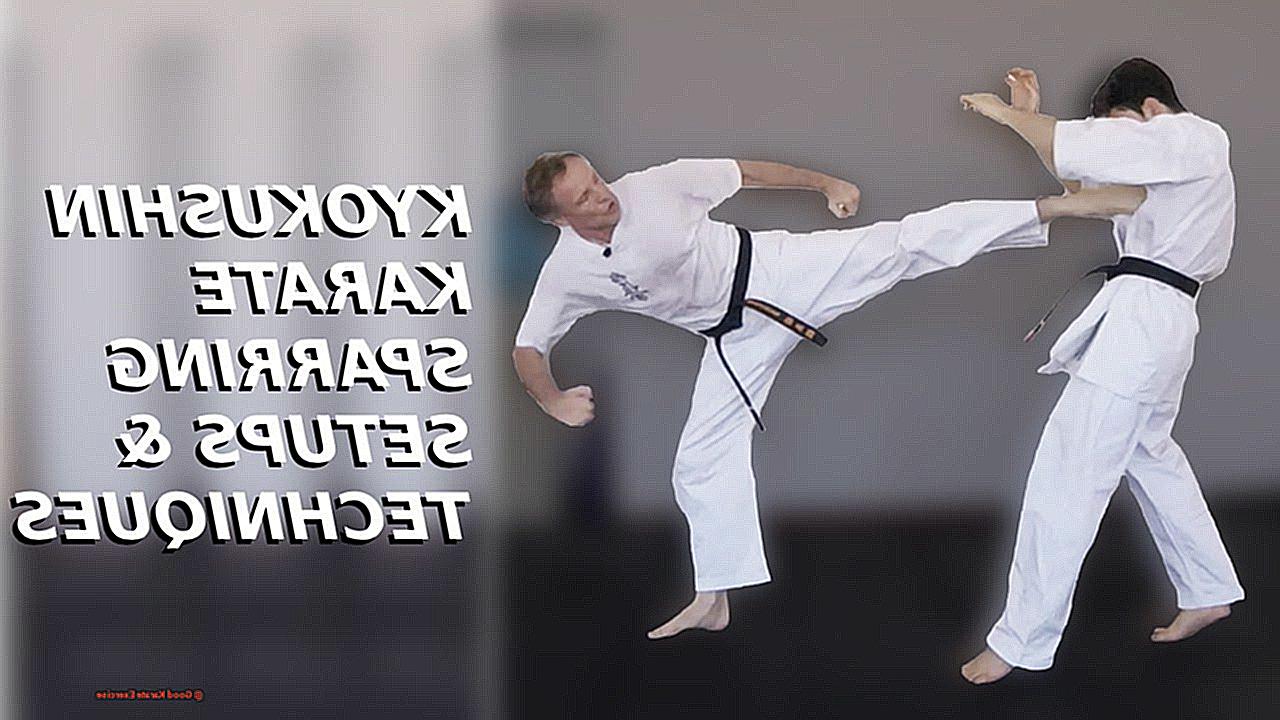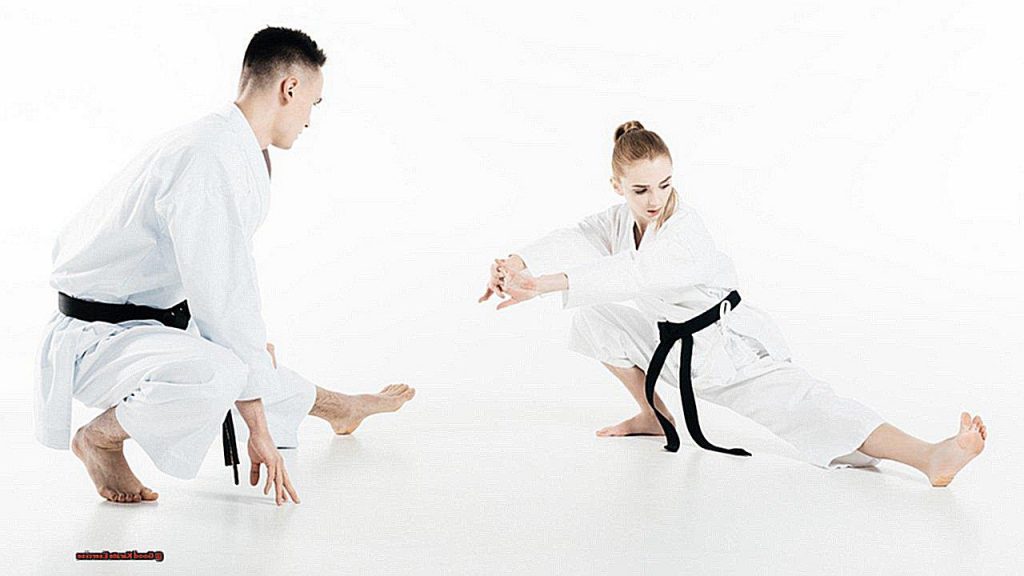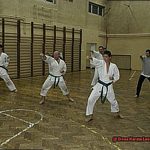Are you searching for a dynamic and empowering workout that not only strengthens your body but also sharpens your mind? Look no further than the ancient art of karate. This highly popular form of exercise has been gaining traction in recent years, attracting people of all ages. But what makes it such a good choice? Let’s break it down:
- Total body transformation: Karate involves a diverse range of movements and techniques that engage all major muscle groups, providing a comprehensive full-body workout.
- Cardiovascular boost: With its fast-paced nature, karate is an excellent way to improve cardiovascular health and endurance.
- Flexibility enhancement: The various kicks, punches, and stances in karate require a high level of flexibility, which can be developed through consistent practice.
- Coordination and balance improvement: The precise movements of karate demand coordination between the mind and body, leading to better overall balance and coordination.
- Mental fortitude: Beyond physical benefits, karate also emphasizes mental focus and discipline through traditional training methods.
So whether you’re looking to tone up, elevate your fitness level or simply try something new, give karate a chance to experience its myriad advantages firsthand.
Types of Karate Fitness
There are several types of fitness exercises related to karate that offer unique benefits to practitioners. These exercises aim to enhance physical fitness, flexibility, mental focus, and consistency. Some examples of effective karate fitness exercises include burpees, the butterfly stretch, meditation, shadow sparring, and incorporating proper form and breathing techniques into workouts. These exercises can aid in building strength, improving coordination and concentration, and increasing stamina and endurance. Additionally, they can also aid in developing discipline and alertness, which are crucial in the practice of karate.
Top 10 Karate Exercises
Below are the top 10 exercises for karate that can enhance physical fitness and technique:
- Cardiovascular endurance: This is vital for sustaining intensity in karate training, allowing for longer and more rigorous workouts.
- Power development: Karate demands robust leg and upper body muscles for executing techniques with force and precision.
- Core strengthening: A solid core is essential for stability and control in karate movements, especially while performing kicks and punches.
- Kumite (fighting) practice: Kumite requires high levels of cardiovascular endurance due to the continuous movement and intensity of sparring.
- Kata (form) practice: Kata focuses on power fitness and explosive energy, making it an excellent exercise for building overall strength and stamina.
- Hill sprints: Hill sprints are an effective way to improve cardio fitness and explosiveness needed for kata training.
- Low stance drills: Low stances are common in karate, requiring explosive power from leg work. Training with low stances can help develop strength and power in the legs.
- Rotational core workouts: Incorporating a yoga ball or medicine ball into rotational core exercises can improve hip movement and punching power, crucial for effective karate techniques.
- High-intensity interval training (HIIT): HIIT workouts are an efficient way to improve cardio fitness, necessary for kumite training.
- Single-leg leg press machine exercises: These exercises can help develop explosive power in the legs, specifically for low stance movements in kata.
Remember to always listen to your body and avoid overexertion with these exercises. Rest is crucial for preventing injuries and allowing the body to recover.
How Many Times Should You Condition Train Each Week
The answer may surprise you. According to experts, the recommended frequency for conditioning training in karate is six to seven times a week for intermediate and advanced students. That may seem like a lot, but trust me, it’s worth it.
Why is this frequency so important? Well, first and foremost, karate training demands a high level of physical fitness. In order to execute techniques with speed, power, and precision, practitioners must have a strong and well-conditioned body. This is where conditioning training comes in. By improving strength, flexibility, speed, and endurance, practitioners can reach their full potential in karate.
But that’s not all. Conditioning training also plays a crucial role in promoting cardiovascular health. This is essential for sustaining the high-intensity movements and rapid bursts of energy required in karate. Plus, it helps to increase muscle strength, allowing for even more powerful and controlled techniques.
Of course, it’s important to strike a balance between training and recovery. Overtraining can lead to burnout and injury, which can hinder progress and cause setbacks. That’s why it’s recommended to have rest days in between conditioning sessions. This allows the body to recover and repair itself, ensuring long-term success.
When it comes to specific exercises, there are plenty of options for conditioning training in karate. Some may require equipment like resistance bands or weights, but basic drills can be done with minimal equipment. Think push-ups, sit-ups, squats, and jumping jacks.

So in conclusion, the recommended frequency for conditioning training in karate is six to seven times a week for intermediate and advanced students. By following this regimen and balancing it with proper rest days, practitioners can greatly enhance their performance in karate.
How Many Times Should You Condition Train Each Week
The recommended training frequency for seeing results in karate conditioning is 2 to 3 times per week. This allows for adequate rest days in between sessions, preventing over-training and potential injuries. Even practicing once a week can lead to progress over time, but it’s better than not practicing at all. For those with a flexible schedule, training 6 to 7 times a week can provide additional benefits for intermediate and advanced students.
It’s crucial to keep in mind that each session should last between 1.5 to 2 hours for optimal results. This gives enough time for proper warm-up, which should take at least 30 minutes, as well as focusing on various aspects of karate training such as techniques, forms, and sparring.
| Training Frequency | Duration of Each Session | Recommended for: |
| 1 time a week | 1.5-2 hours | Beginner or those with limited availability |
| 2-3 times a week | 1.5-2 hours | All fitness levels |
| 6-7 times a week | 1.5-2 hours | Intermediate and advanced students |
It’s important to note that additional practice at home can also contribute to progress in karate training. This can include basic exercises such as push-ups, sit-ups, squats, and jumping jacks. On average, it takes around 5 years of consistent training to achieve a black belt in karate, with approximately 4 hours of weekly training. Therefore, dedication and consistency are key in achieving success in karate conditioning.
So, while the ideal training frequency for karate conditioning is 2 to 3 times per week, it can vary depending on individual schedules and fitness levels. It’s crucial to listen to your body and avoid over-training, as well as incorporating additional practice at home to supplement instructed lessons.
Conclusion
In conclusion, karate is a highly effective and multifaceted form of exercise that offers numerous physical and mental benefits.
Through its diverse range of movements and techniques, karate engages all major muscle groups, providing a comprehensive full-body workout. It also requires intense focus and discipline, making it not just a physical challenge but also a mental one.
There are various types of karate fitness exercises that can aid in building strength, improving coordination and concentration, and increasing stamina and endurance. For optimal results in karate conditioning, it is recommended to train 2 to 3 times per week.
However, for those with more flexible schedules or seeking advanced skills, training 6 to 7 times per week can yield additional advantages. Consistency and dedication are crucial in achieving success in karate conditioning, with an average of 4 hours of weekly training needed to attain a black belt.






